Paper-editing with story concepts
Now Let's revisit our paper-edit overview in relation to some story concepts that can help us along the way crafting a more compelling narrative.
We'll give an overview of the paper-editing process. At appropriate stages will introduce relevant Story concepts. However to avoid cluttering this space, we link to the story concepts each in its separate section, so that they can also be easier to reference at a later stage.
As you are reading through, take a side step to read the story concepts as they are introduced as part of the paper-edit process and then come back to the main workflow.
1. Timecoded Transcription
Transcriptions play an important role in the abstraction process. So first things first, start by getting transcriptions of the material to work with.
Hands on option
If you like an hands on approach and would like to follow along, you can use the provided transcriptions from the Whistle Blower Interview Archive, or your own material. Alternatively you can just read it and skip the hands on parts.
Your own material
If you want to use your own material, you can use autoEdit.io to generate a first draft of automated transcriptions. And export as a plain text time-coded transcription. See autoEdit user manual and last section for more on this.
You can also manually transcribe your own material, but we discourage such approach as tedious and time consuming. You'd have to consider 3 to 4 times the length of the media to do so. Eg 1 hour of a video interview will take you 3 to 4 hours to transcribe, is it worth it?
Some argue that while transcribing you familiarise yourself with the material. To that I say, get the transcription in some other way, and just read it as many time as you need to let it sink in.
Interviews from Whistleblower Interview Project
If you want to use interviews from the Whistle Blower Interview project.

You can print these pdf for a hands on approach
- Thomas Drake Interview | AAA_TD.pdf
- Jesselyn Radack Internview | AAA_JR.pdf
- Annie Maclon Interview | AAA_AM.pdf
You can also explore the corresponding interactive transcriptions project at whistleblower's site.
For the purpose of learning the paper-edit process, we suggest to not watch the video, and just rely on the text transcription. If you need adjustment such as using text to speech, you can do so on the pdf version before printing. But we'd recommend doing the hilighting and the rest of the process on paper.
Let me also re-iterate that on the other hand for day to day editing of video interviews we recommend using autoEdit.io, as described in the last section. But bear in mind that nothing beats the analogue workflow to learn the process as well as key story crafting ideas and techniques along the way.

2. Read
Read it through a first time. Sometimes people do point 2 and 3 at the same time. But take your time and do it in two steps if you need to.
3. hilight what stands out
Read a second time, with a hilighter and mark things that stands out at a gut feeling level.
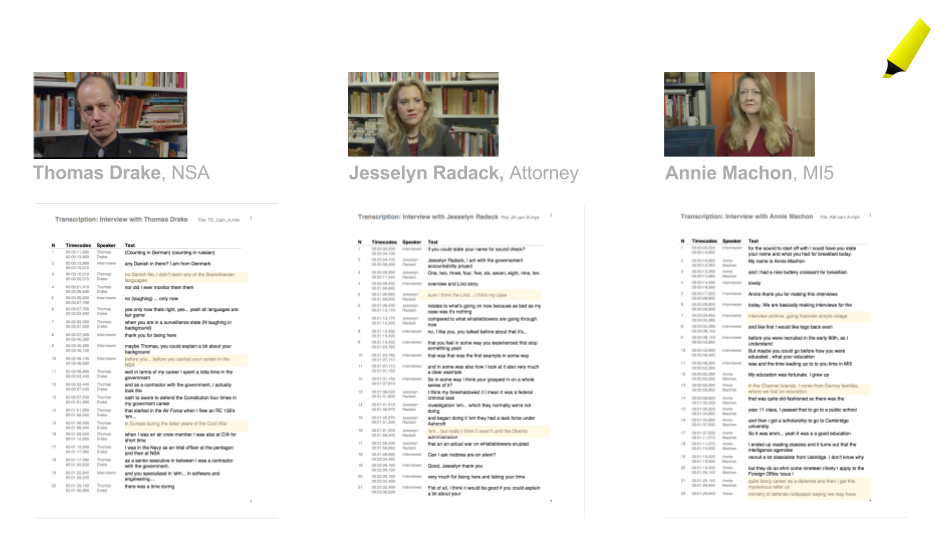
Story concepts:
Let's consider some basic terminology to get some vocabulary to start thinking about the key element of story crafting.
4. Identify Themes and ideas
Look through a third time to identify themes and ideas that could be group together, from the parts you have identified.
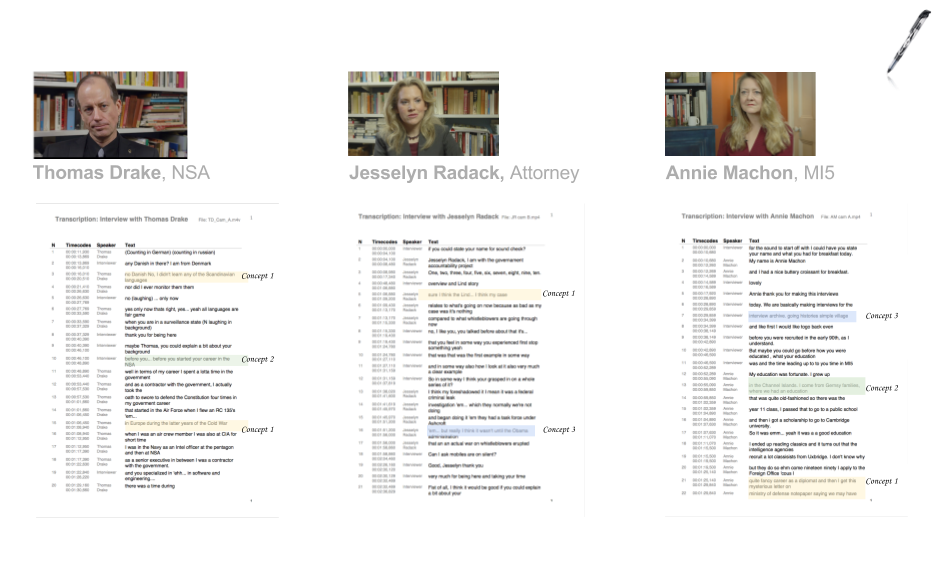
Story concepts:
This is a good time to start thinking about what makes a good compelling character. What do you think that is the key element?
As you might have guessed it's conflict. Let's look into more details at the 3 levels of conflict as a tool to analyse our contributors.
We then consider the the Gap between expectation and reality as key driving force to propel the narrative forward.
4. list the themes
Make a list of the themes you have identified in each interview.
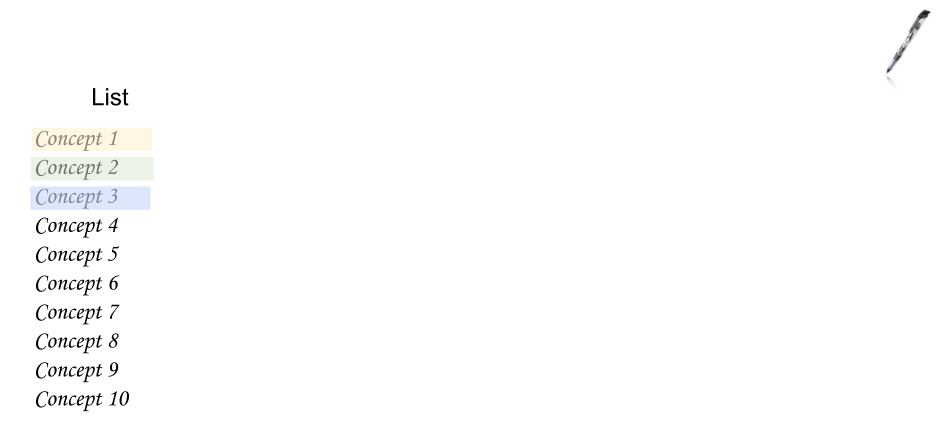
5. explore relations
Think about how the themes relate to each other
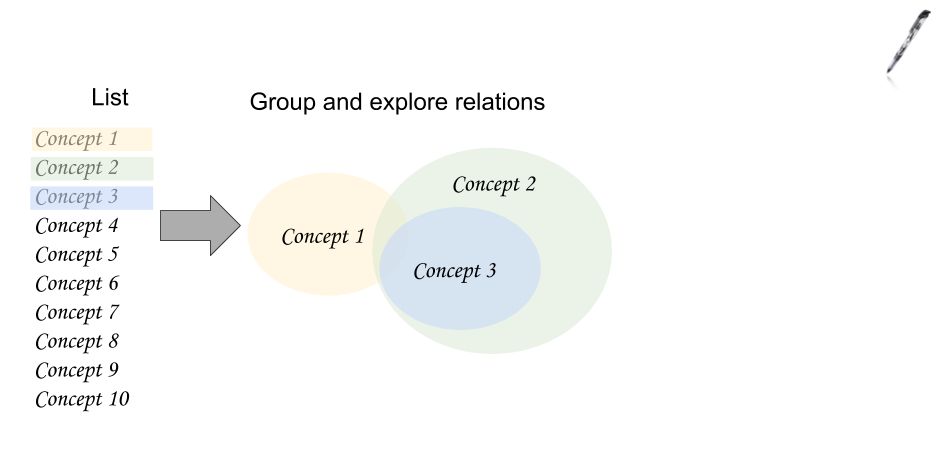
6. Make high level outline
Make an outline of these high level themes, selecting the most significant.
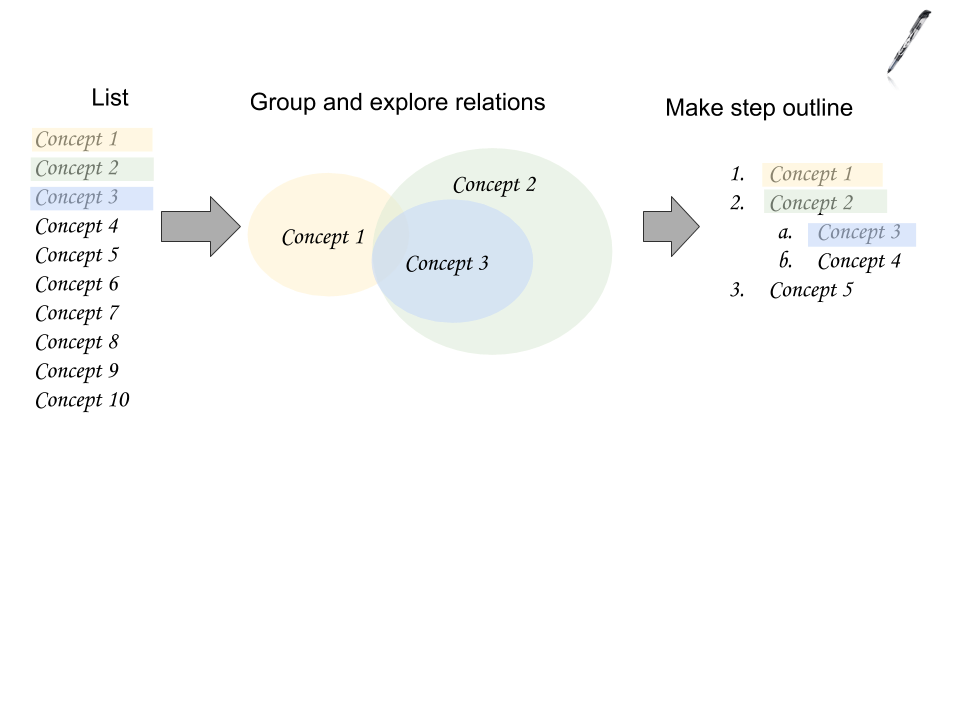
Story Concepts:
Let's now focus on the basics of story structure. Almost every story can be reduced down to The Quest. Let's consider in more details what are the components of such story arc, and what that means for our story crafting.
A canonical example that is good to know about is the so called Three Act Structure, let's examine in details what are the parts that make the whole. Beware that you might not need to have all 3 acts all the time, for short piece one Act is generally enough. And sometime a different structure might be more appropriate. But as they say "learn the rules so you can break them".
7. Fill in the dialogue
Fill in the dialogue, find the text in the transcription for each theme in the outline, and add it to the outline.
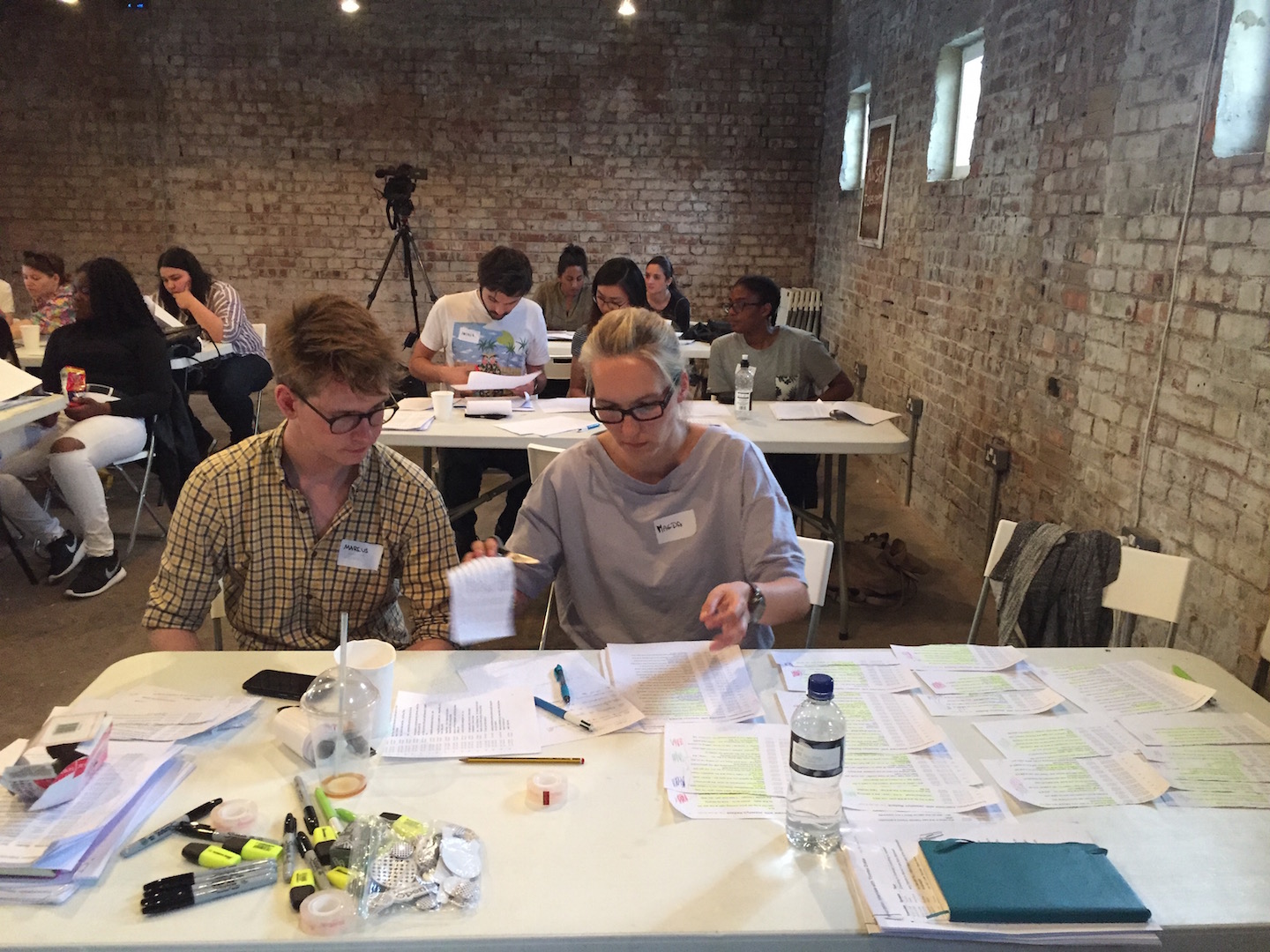
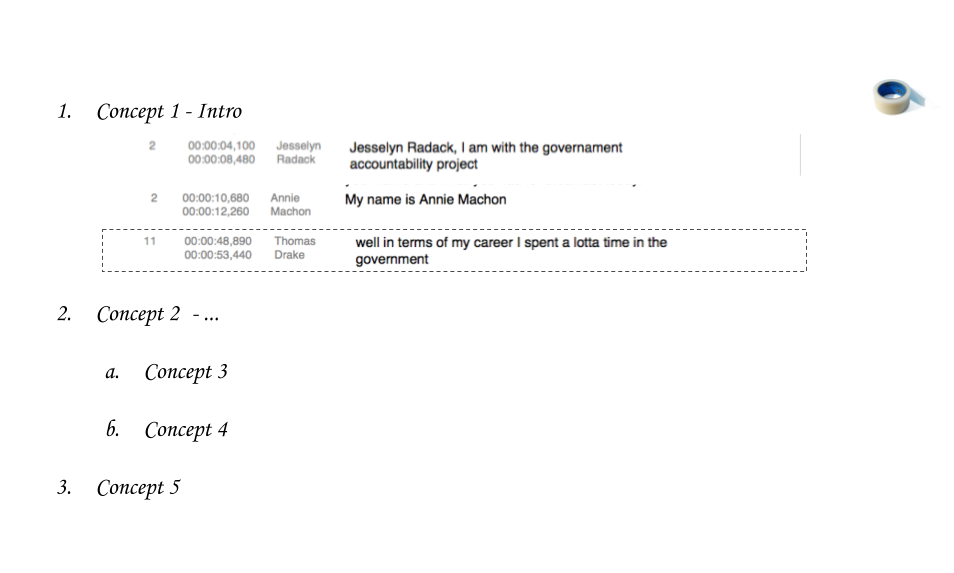
add text selection to outline

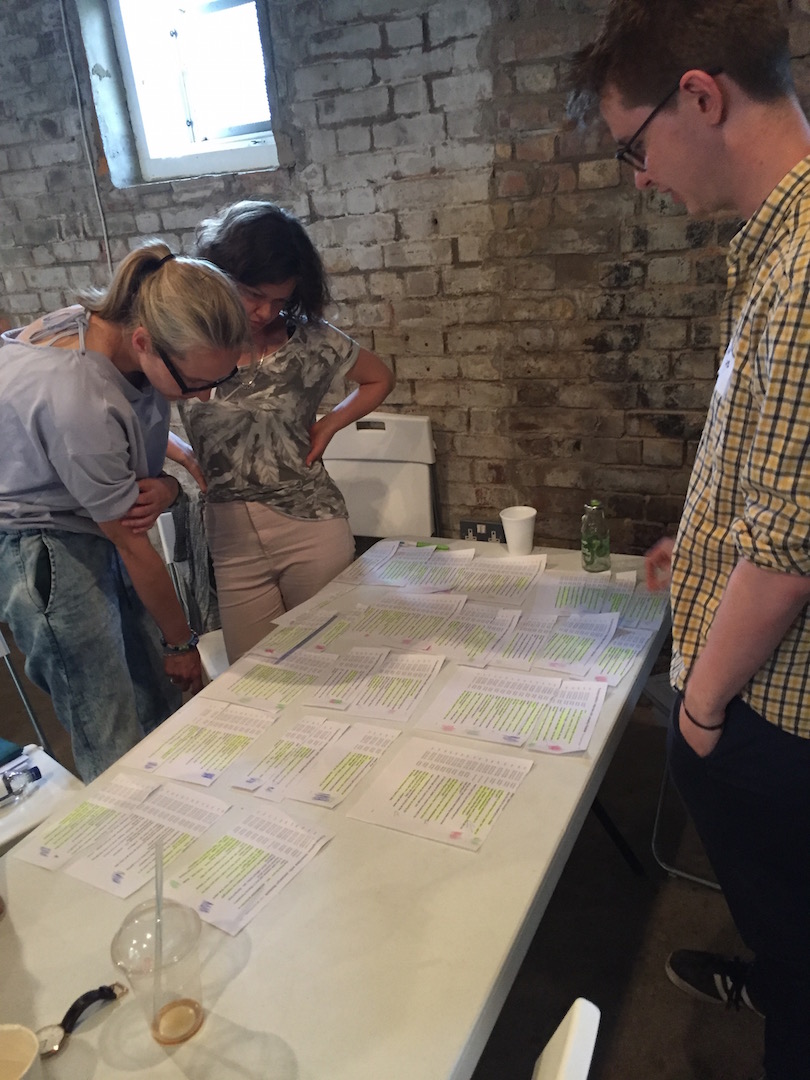
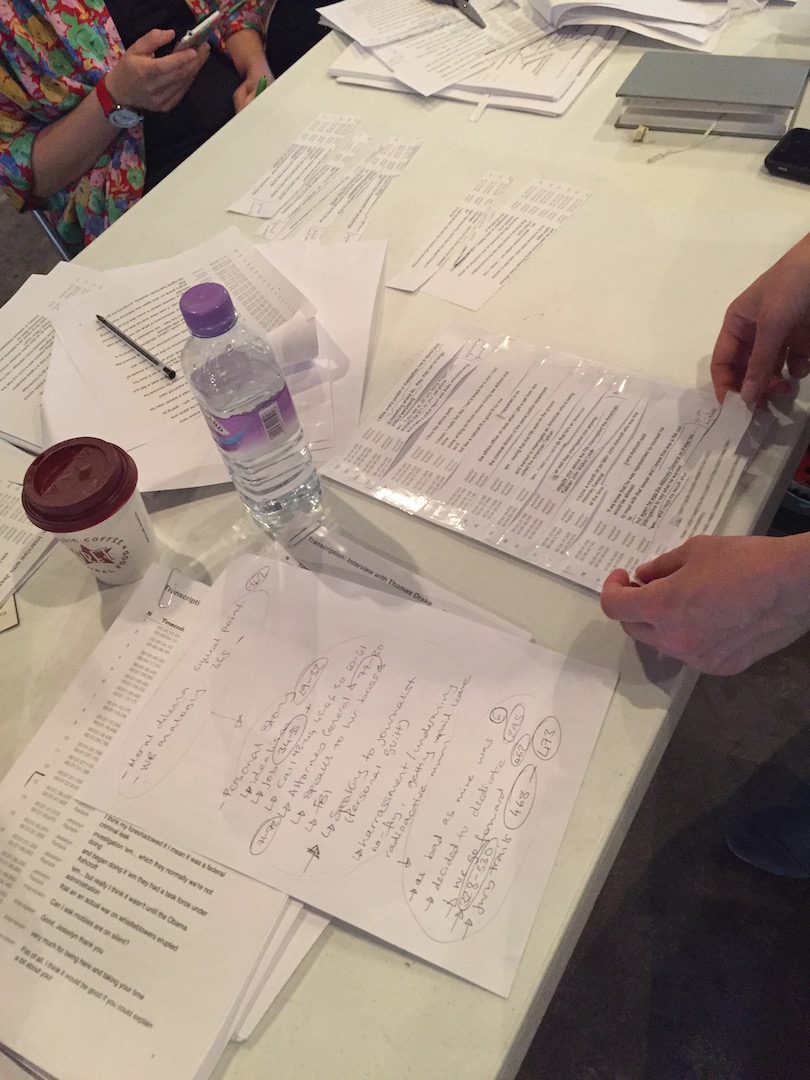
Story Concepts:
This is a good time to revisit exposition as a tool that can be used to strengthen the narrative. Key to exposition is the notion of "letting the audience know what they need to know when they need to know it".
8. Reconnect video sequence
Using the timecodes and file reference in the paper-edit reconnect the video sequence in the video editing software of choice.
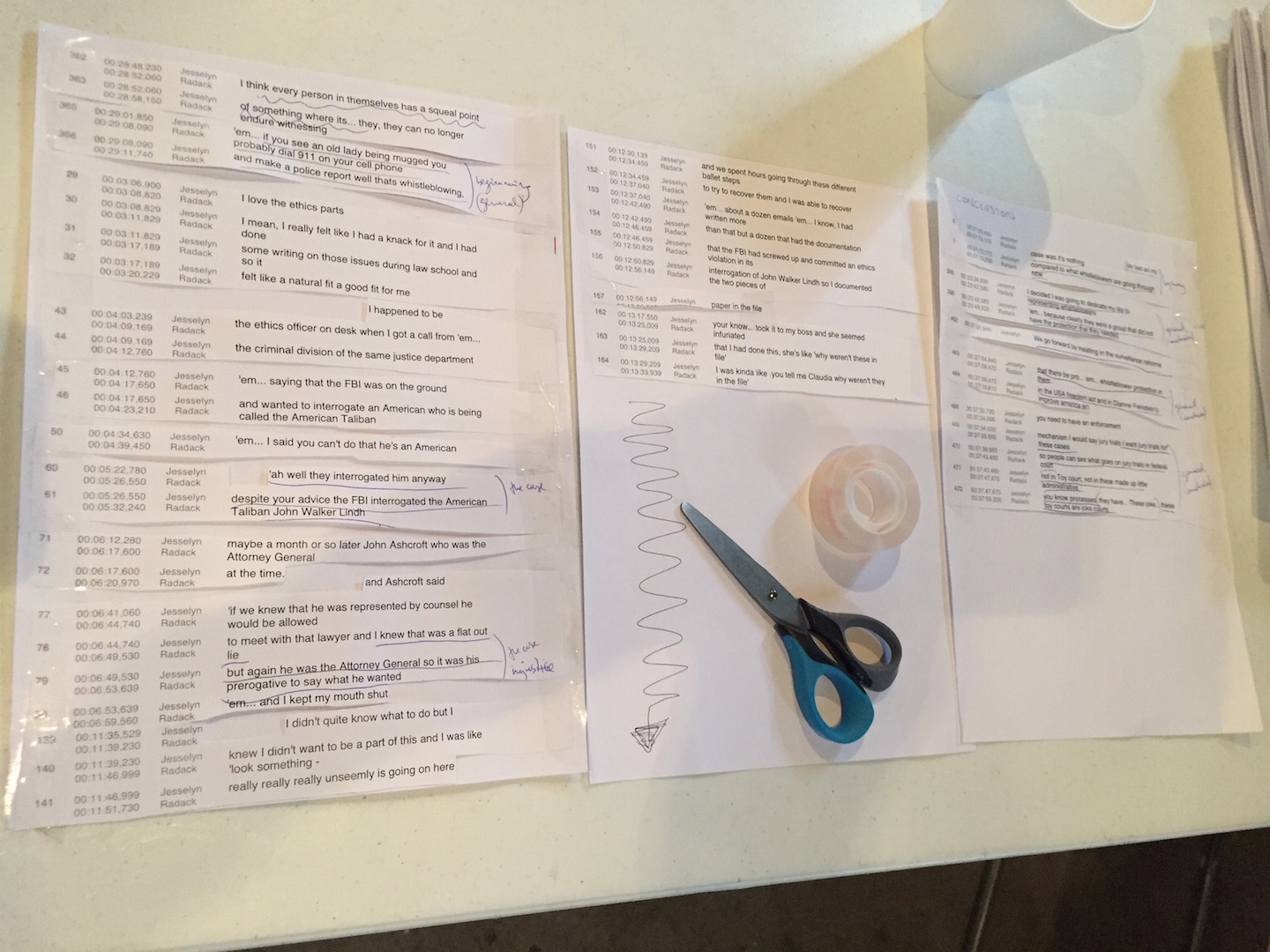
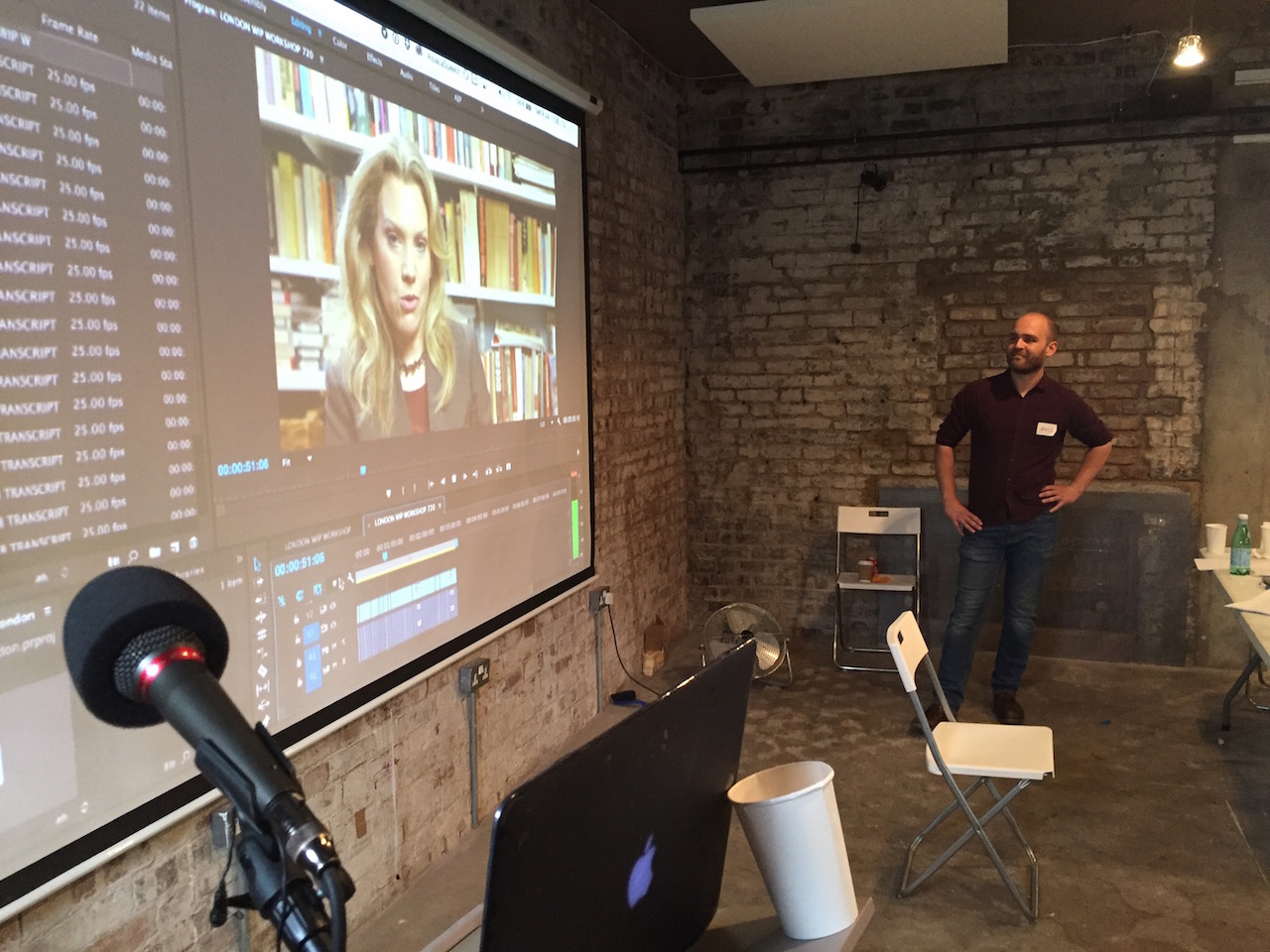
Story Concepts:
This takes you to a rough cut stage in the documentary production process. Once you enter post-production and leave you'll be adding b-rolls/cutaways and work towards a fine cut. But your interviewed based story structure is pretty much in place at this current stage.
The key to the paper-editing process, is that at this stage you can iterate. You can read it through, see if flows and make changes until it does.
You can assemble the video sequence, watch it, iterate back on the paper-edit, and repeat until the story feels compelling enough.
Now that you have a good overview of the process, it's time to consider how the ladder of abstraction applies to paper-editing.
Digital Paper-editing
That's it for the analogue part, next parts of this "story concepts section" cover the story concepts that we have introduced through the process.
You can now go to the Digital paper-editing section to learn about how to use autoEdit for your day to day editing of video interviews.
